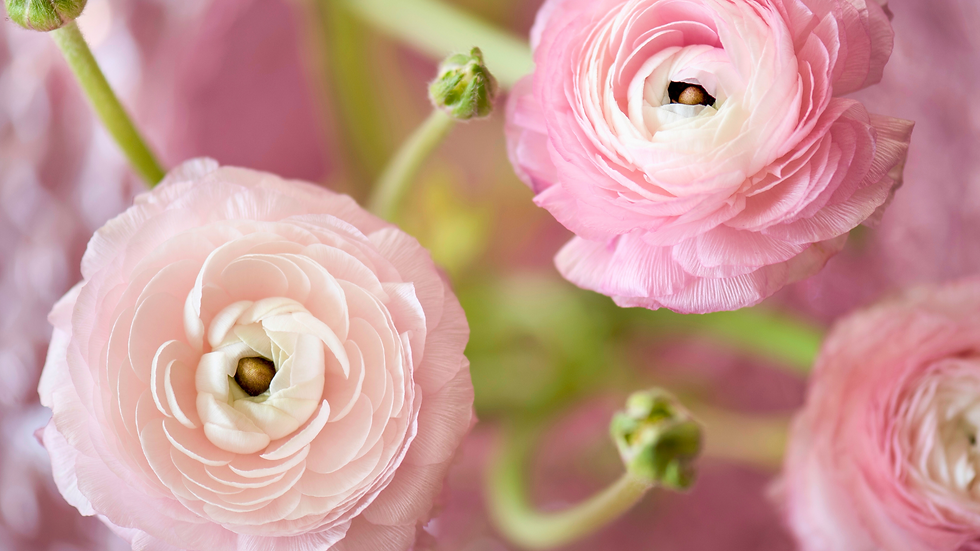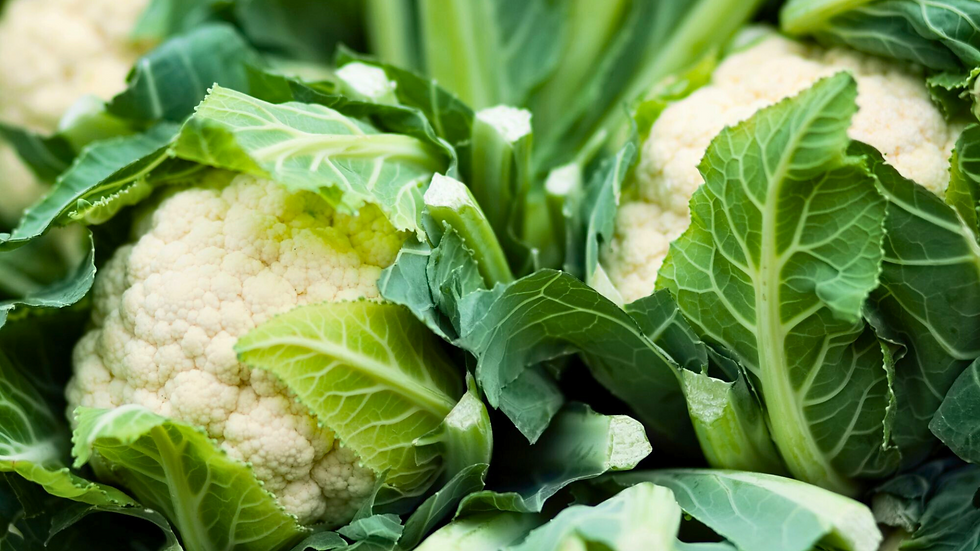How to Grow Ranunculus
- The Carbon Garden

- Jul 31
- 3 min read
Updated: Oct 8

In this article, we share a comprehensive guide to growing ranunculus at home.
Quick Guide Information:
Common Name: Ranunculus
Scientific Name: Ranunculus asiaticus
Family: Ranunculaceae
Life Span: Perennial (grown as an annual in most Australian regions)
Time Till Bloom: 12–16 weeks from planting
Light Requirement: Full sun
Optimum pH: Neutral to slightly acidic (6.0–7.0)
Ranunculus (Ranunculus asiaticus) are cool-season flowers loved for their full, layered petals and soft colour range. Grown from small claw-shaped corms, they’re well suited to Australian home gardens, especially in temperate and Mediterranean climates.
With the right care of full sun, free-draining soil, and regular moisture, each corm can produce a steady flow of blooms through late winter and early spring. Their long stems and vase life make them perfect for picking and bringing indoors.
Ranunculus are typically grown as annuals, but the corms can be lifted and stored for future seasons. Their timing is unique, offering vibrant flowers when much of the garden is still resting.
For home gardeners, they’re an easy and satisfying way to add colour, rhythm, and floral abundance to the cool-season garden.
Propagation, Planting, and Maintenance:
Soak ranunculus corms in lukewarm water for 1–2 hours before planting to help them rehydrate and gently break dormancy. Choose a sunny, sheltered location. Ranunculus need at least six hours of direct sunlight per day for strong blooms. They prefer free-draining soil, so if you’re working with heavier clay, blend in coarse sand and compost to improve texture. Loamy or sandy soils enriched with organic matter are ideal.
In temperate regions (VIC, SA, TAS, southern NSW, southern WA), it’s ideal to plant in autumn. In warmer coastal areas (southern QLD, coastal NSW, Perth), you can plant directly into garden beds. In colder or frost-prone areas, wait until the risk of frost has passed or start them in pots.
Plant the corms with the claws pointing down, 5cm deep and 10–15cm apart. Leave 6–8cm of space around each plant to allow for good airflow, which helps prevent fungal issues, especially important in humid areas. Avoid overcrowding and prioritise ventilation wherever possible.
After planting, water gently to settle the soil. Keep soil evenly moist throughout the growing season, but avoid overwatering. As the foliage yellows at the end of flowering, reduce watering to allow the plant to enter dormancy.
Mulch with straw or lucerne to retain moisture and suppress weeds especially helpful in exposed or dry regions. To keep beds visually lively across the season, group ranunculus with plants that bloom later in spring or early summer. This ensures the space continues to evolve as ranunculus foliage fades. Timing is key. Be guided by your local climate and soil, matching planting to seasonal cues will support healthier growth and better flowering.
Nutrient Support and Foliar Care
Once new shoots appear, ranunculus will benefit from a gentle, consistent nutrient routine to support strong stems and prolonged flowering.
If you’re following The Carbon Garden Program, begin the fortnightly foliar spray cycle as soon as active growth begins:
Week 1: Plant Food (10ml per litre of water)
Week 2: CropBioLife Activator (2ml per litre) + Plant Tonic (2ml per litre)
Repeat this 4-week rotation throughout the growing season. Spray in the early morning or evening, avoiding hot or windy conditions, and allow leaves to remain wet long enough for nutrients to be absorbed.
If you’re using a different fertiliser system, take care not to overfeed. Ranunculus prefer lower nitrogen levels during flowering, and excessive nutrients may promote leaf growth at the expense of blooms. Avoid combining synthetic fertilisers with CropBioLife Activator, as this can interfere with its natural mode of action.
Whether you follow The Carbon Garden approach or another gentle program, consistency is key. Supporting the plant’s nutrient needs with balanced inputs and timing will help create a longer, healthier flowering window.
Ongoing Care
Deadhead spent flowers regularly to encourage continued blooming. Once flowering slows and the foliage begins to yellow, allow it to die back naturally. This helps the plant store energy in the corm for future seasons. In warmer regions, lift and store the corms after dormancy begins. Dry them in a cool, dark place and keep them stored until next planting season.
Common Problems:
Yellowing Leaves: Often due to overwatering or poor drainage. Keep soil moist, not soggy.
Powdery Mildew: Caused by overcrowding or poor airflow. Space plants well and avoid overhead watering. Use organic fungicides if needed.
Pests: Aphids and thrips may appear on new growth. Treat with insecticidal soap or neem oil.
Rotting Tubers: Usually a result of waterlogged soil. Ensure good drainage and avoid planting in heavy, wet ground.
By following these seasonal care tips, ranunculus can bring weeks of colour and charm to your garden. For more guidance on how to grow naturally and in tune with the seasons, visit our website or explore our garden guides.






Comments